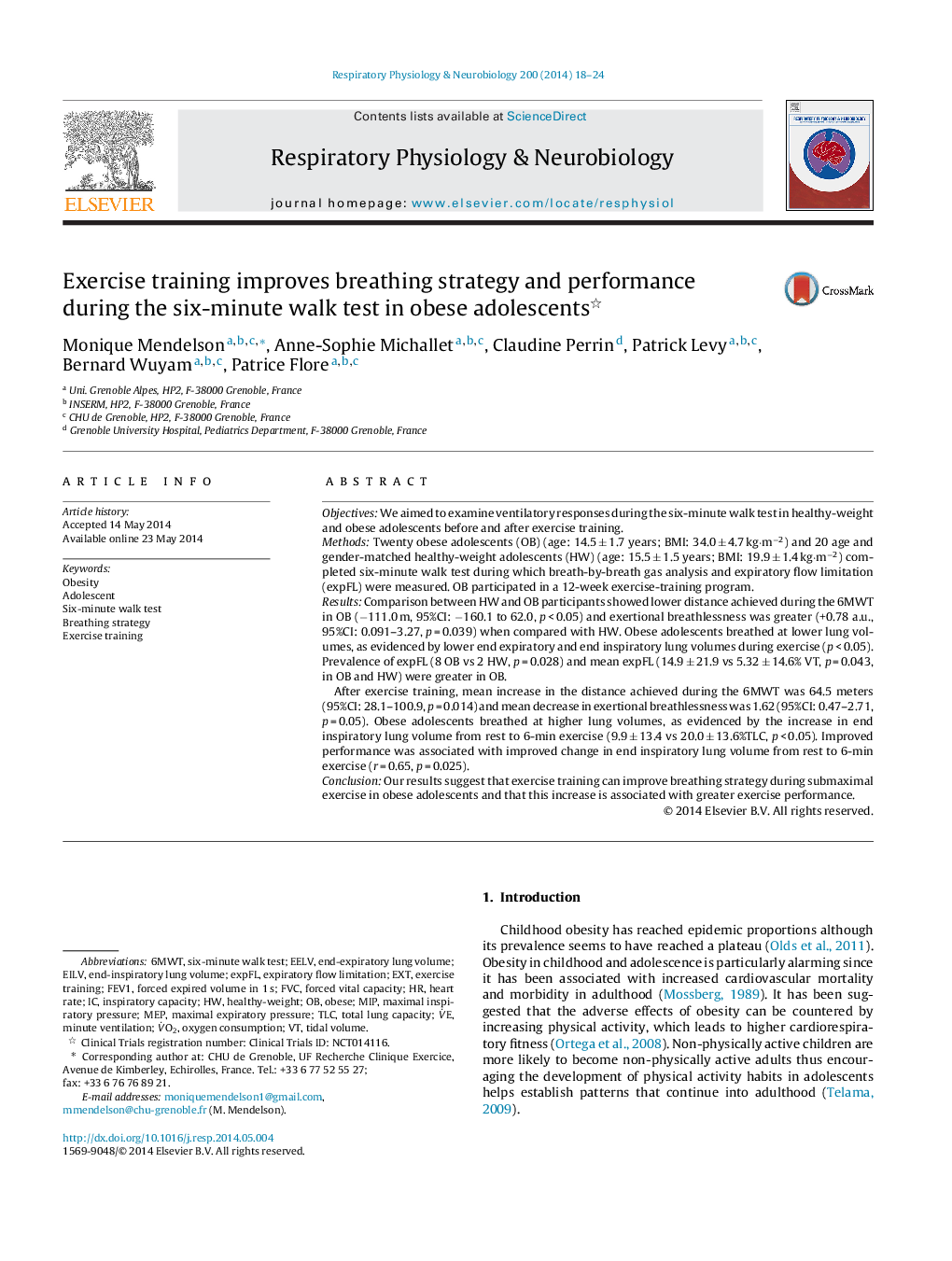| کد مقاله | کد نشریه | سال انتشار | مقاله انگلیسی | نسخه تمام متن |
|---|---|---|---|---|
| 2846992 | 1571328 | 2014 | 7 صفحه PDF | دانلود رایگان |
• ·Obese and normal-weight adolescents were evaluated during a six-min walk test.
• ·The obese group breathed at lower lung volumes and had expiratory flow limitation.
• ·After exercise training, exertional breathlessness was decreased.
• ·Obese adolescents also improved their breathing strategy and performance.
• ·Improved performance was associated with breathing at higher lung volumes.
ObjectivesWe aimed to examine ventilatory responses during the six-minute walk test in healthy-weight and obese adolescents before and after exercise training.MethodsTwenty obese adolescents (OB) (age: 14.5 ± 1.7 years; BMI: 34.0 ± 4.7 kg·m−2) and 20 age and gender-matched healthy-weight adolescents (HW) (age: 15.5 ± 1.5 years; BMI: 19.9 ± 1.4 kg·m−2) completed six-minute walk test during which breath-by-breath gas analysis and expiratory flow limitation (expFL) were measured. OB participated in a 12-week exercise-training program.ResultsComparison between HW and OB participants showed lower distance achieved during the 6MWT in OB (−111.0 m, 95%CI: −160.1 to 62.0, p < 0.05) and exertional breathlessness was greater (+0.78 a.u., 95%CI: 0.091–3.27, p = 0.039) when compared with HW. Obese adolescents breathed at lower lung volumes, as evidenced by lower end expiratory and end inspiratory lung volumes during exercise (p < 0.05). Prevalence of expFL (8 OB vs 2 HW, p = 0.028) and mean expFL (14.9 ± 21.9 vs 5.32 ± 14.6% VT, p = 0.043, in OB and HW) were greater in OB.After exercise training, mean increase in the distance achieved during the 6MWT was 64.5 meters (95%CI: 28.1–100.9, p = 0.014) and mean decrease in exertional breathlessness was 1.62 (95%CI: 0.47–2.71, p = 0.05). Obese adolescents breathed at higher lung volumes, as evidenced by the increase in end inspiratory lung volume from rest to 6-min exercise (9.9 ± 13.4 vs 20.0 ± 13.6%TLC, p < 0.05). Improved performance was associated with improved change in end inspiratory lung volume from rest to 6-min exercise (r = 0.65, p = 0.025).ConclusionOur results suggest that exercise training can improve breathing strategy during submaximal exercise in obese adolescents and that this increase is associated with greater exercise performance.
Journal: Respiratory Physiology & Neurobiology - Volume 200, 15 August 2014, Pages 18–24
